Be Uplifted With Traditional Music in Dingle Town
Of all of the places I have visited in Ireland, Dingle is, in this traveler's opinion, one of the most beautiful. Its natural beauties are only the beginning. The bright, colors of the shops, offices and homes are inspiring in this small town setting. Finally, the kindness and liveliness of the people supplement the already charming and peaceful surroundings. It was not more than ten minutes after I arrived that I thought to myself, "I cannot wait to come back here!" Though I have not been able to go back there since then (about 2 and half years ago), I still look forward to the opportunity to revisit this small town, and see what else it has to offer. Simply looking through my photographs and journals of my visit to Dingle brought back the warmth I felt when I was there (despite the summer chill and temporary mist!).
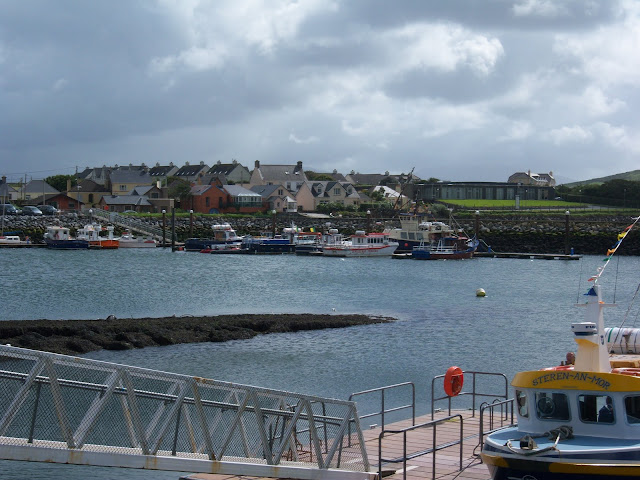

Dingle Town is situated in the Southwest of Ireland, on the Dingle Peninsula in County Kerry. The whole of Kerry is well known for its incredible landscape. Despite my exhaustion from my early-morning departure from Killarney to Dingle, I could not take my eyes off the deep green hills and mountains (not to mention the very narrow roads, the sharp turns and even sharper cliffs. The bus driver did not seem to share these sentiments.). There are a number of small towns to visit in the Dingle Peninsula but, with only a few days to spend there, I thought it best to get to know Dingle town itself. The town itself was well developed by the thirteenth century and proved to be an important port in Western Ireland. Though I am generally an Irish history buff, it is today's Dingle that makes it so special. This includes outdoor activities, traditional music, cafes and restaurants. No matter what interests you may have, Dingle has something for everyone.
It was one of these, however, that made the most impact on my visit to Dingle. The music. It was in Dingle that I felt the most connected to the people performing. I had been living in Galway City at the time and was no stranger to stumbling upon really great music while with friends or wandering on my own. Coming to an even smaller town on my lonesome would force me to find a lively place that would make me feel at home. Each of my experiences on my short stay in Dingle gave me that feeling. I could have gone to any of these places each night if I had the chance. These sessions were special and my excitement for seeing live music in Ireland was reborn.
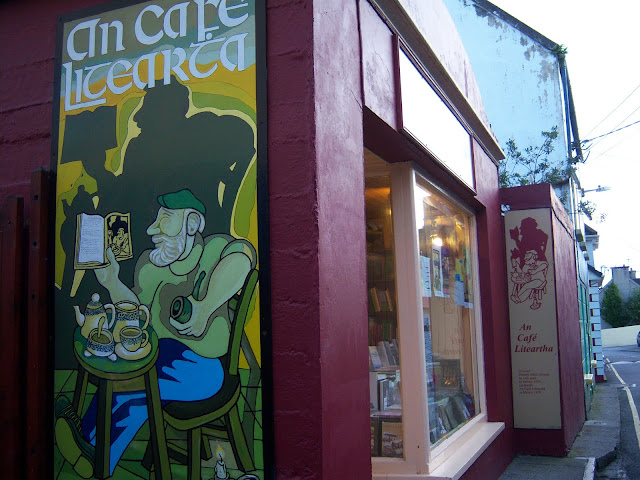
As much as I love Irish history, I love traditional Irish music just as much, if not more. I have always gained a sense of peace and freedom while listening to live musicians performing tunes that have been played throughout the generations. Needless to say, when I go somewhere new in Ireland, I first find the best places to go for live music. I have found that the best way to get the best of traditional music as a visitor is to go into the music shops and ask the staff where it can be found. Sure, I could ask the waitress in the pub or the staff at the tourist office, but I figure who would know better than someone who knows music and instruments inside and out? I saw a man with a banjo outside a music shop and asked him where to go for great music that night. He told me to go to An Droichead Beag, or The Little Bridge in Irish, and that he was playing as session there that night.
I love moments like this. I was speaking to the owner of the music shop and now had a familiar face to look out for at the pub that night! I went to An Droichead Beag in the evening and I found that the pub itself was something special. Very dark and, like many Irish pubs, much bigger on the inside than one would think! The darkness of the place set the scene, and the number of rooms, of tiny nooks and crannies were both surprising and comfortable. Like a good college student at the time, I took my place at the bar. Not for the juvenile reasons you might think but, in my experience, a stool at the bar is the best place in the house. Here is where you meet the most people and learn more about the place your visiting. You meet more locals, you talk to the barkeep and you can usually see everything that is going on in the pub. The music here was great and the lively atmosphere contributed to my enjoyment of it.

The following night I trusted my own instincts for music and ended up at John Benny Moriarty's Pub. A mouthful, I know. Here is where I enjoyed watching music the most on my trip to Dingle. It was quite it more informal than the session from the previous evening. Tonight the women were in the majority of the musicians and their talent. For involving their audience and further lightening the atmosphere was incredible. It almost felt as if they knew everyone in the room and were having an ongoing conversation with each of us through both music and speech. The pub itself had a more modern feel to it than An Droichead Beag and was packed with people. I will never forget the performance of a song entitled "The Factory Girl." It felt uplifting and I could tell each patron was enjoying it as much as I was. This was probably one of the best sessions I have witnessed throughout my travels in Ireland.
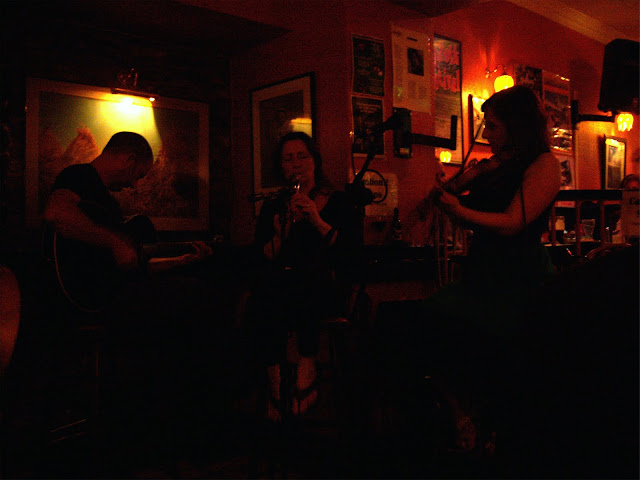
I took the opportunity to play a little music myself on my last full day in Dingle. I took a one-hour bodhran workshop at The Dingle Music School, which also provides tin whistle lessons. The bodhran is a traditional drum played in Irish music. Here I learned the basics about the bodhran and how to play it. The teacher kept it simple enough for beginners, like myself, but encouraged us to improvise and add extra beats where we thought appropriate. As someone who had never picked up a bodhran in my life, I was quite pleased with myself. Even the teacher looked at me and said, "You've done this before." I hadn't, actually, but it might have helped that I ad playing music most of my life and had been living with a bodhran player back in Galway at the time. I'm no percussionist, so I think I'll leave my ten seconds of fame in that classroom and stick to what I do know about. The hour went by too quickly for my liking, but there you go. Time definitely flew with how much fun I was having.
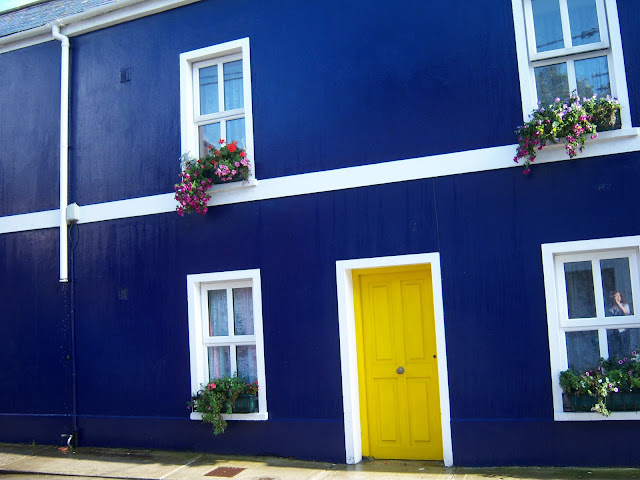
My final night in Dingle was filled with music, yet again. When I was planning my visit, I saw that there were folk concerts on the weekends throughout the summer. I was lucky enough to catch one of the last of the concert series on my visit. The concert was held inside St. James' Church, an old church with a yard filled with deteriorating tombstones of centuries past (witness my romantic historian sensibilities peeping through). The yard did not seem well kempt, which added to the church's mystery as dusk began to descend on the town. Inside the church was not exactly remarkable from the inside. Just...simple. It was not held in a big cathedral. Rather, in a small, local, modest church. What was remarkable was the sound of the music in this space. It echoed as church music does but, because it was a different type of music, it echoed in a different way. The musicians were incredible. It was quite strictly folk music with just a touch of traditional Irish music. There was one female artist in the group, Seosaibhin Ni Bheaglaoich, whose voice resonated throughout the space. It may have been the most beautiful, soft expression I have ever heard. The men of the group, Peter Miller, Gerry O'Beirne and Eoin Duigan, were equally as great on their many instruments and rapport with the audience. It is a phenomenal experience to witness such talent and I would highly recommend researching each of these artists to all lovers of folk music, sean-nos singing (literally "old-style singing" in Irish) and traditional Irish tunes.
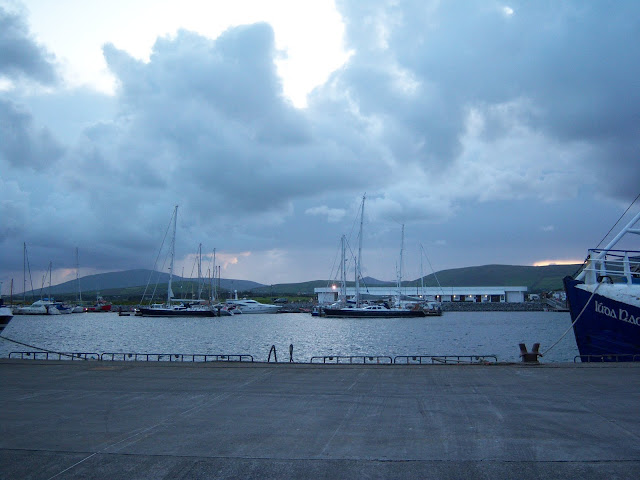
To think, only three days in this town and I still hadn't seen all the music that Dingle Town had to offer. I was sad to leave this small, lovely town but I was overjoyed with what I had seen in such a short time. Hopefully I will be able to experience the rest of the gems Dingle is home to. Catching the bus out of Dingle and on my way back to Galway I could not keep my eyes off the incredible landscape, with a smile on my face and a head full of music and memories I have cherished ever since.
Kimberly Ballaro is the History of Ireland Editor for Wandering Educators






















